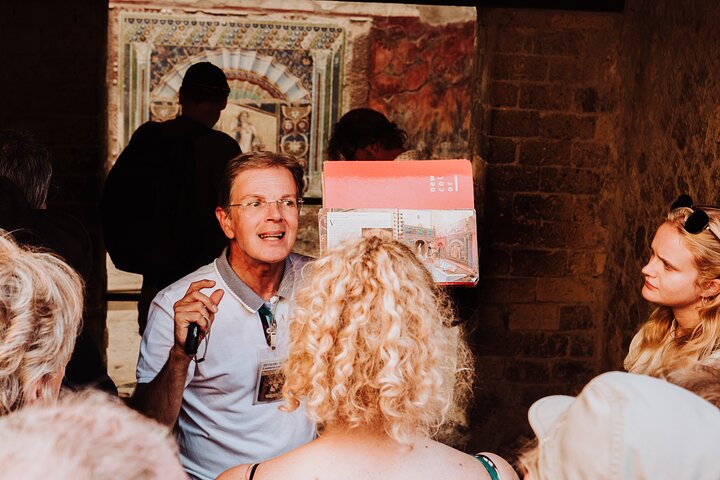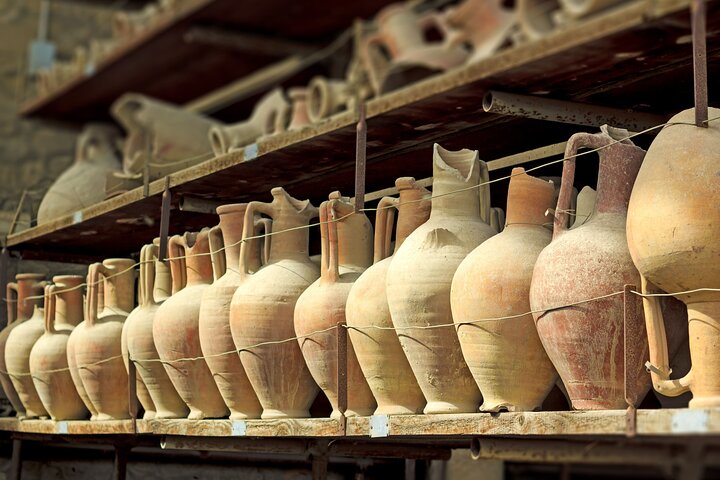Unveiling the Secrets of Herculaneum: A Historian’s Perspective
As a historian with a deep love for ancient ruins, I was drawn to the Herculaneum Tour to explore the remnants of a city frozen in time by the eruption of Mount Vesuvius. Join me as I recount this unforgettable journey through history.
A Journey Back in Time: The Streets of Herculaneum
As a former professor of European history, I have always been drawn to the ancient ruins that whisper stories of the past. My recent visit to Herculaneum, a city frozen in time by the catastrophic eruption of Mount Vesuvius in 79 AD, was nothing short of a revelation. Accompanied by my wife, we embarked on a tour led by Anna, an archaeologist whose passion for the site was palpable.
Walking through the streets of Herculaneum, I was struck by the remarkable preservation of the city. Unlike Pompeii, which was buried under a blanket of ash, Herculaneum was engulfed by a pyroclastic flow that preserved wooden structures, frescoes, and even food. Anna guided us through the ancient streets, her narrative weaving together the threads of history, art, and daily life in a way that brought the city to life. Her insights into the social and economic dynamics of the time were particularly enlightening, offering a glimpse into the lives of the merchants and nobility who once thrived here.
The Architectural Marvels of Herculaneum
Our exploration took us to some of the most significant sites within the ruins. The House of the Deer, with its marble statues of stags, stood as a testament to the opulence of the era. The College of the Augustales, believed to be a center for the cult of Emperor Augustus, offered a fascinating look into the religious practices of the time. Anna’s explanation of the intricate frescoes and mosaics that adorned these buildings was a highlight, revealing the artistic prowess of the ancient Romans.
One of the most poignant moments of the tour was our visit to the waterfront, where the remains of over 300 people were discovered, huddled together in a desperate attempt to escape the volcanic fury. This somber reminder of the human cost of natural disasters added a layer of depth to our understanding of the site. As we moved through the Gymnasium and the House of Neptune and Amphitrite, I couldn’t help but marvel at the architectural ingenuity that allowed these structures to withstand the test of time.
A Living History Lesson
Anna’s ability to transform our tour into a living history lesson was truly remarkable. Her storytelling was not just informative but also engaging, making the ancient city feel vibrant and alive. As we wandered through the Central Thermae and the House of the Black Salon, I found myself imagining the bustling activity that once filled these spaces. The carbonized remains of wooden doors and partitions added an eerie authenticity to the experience, reminding us of the suddenness with which life was interrupted.
The tour concluded with a visit to the Casa Sannitica, where the Ionic columns and frescoed rooms offered a glimpse into the architectural styles that influenced the region. As we left the ruins, I felt a profound sense of connection to the past, a reminder of the enduring legacy of human civilization. For those with a passion for history and architecture, a visit to Herculaneum is an opportunity not to be missed. Herculaneum Tour














































